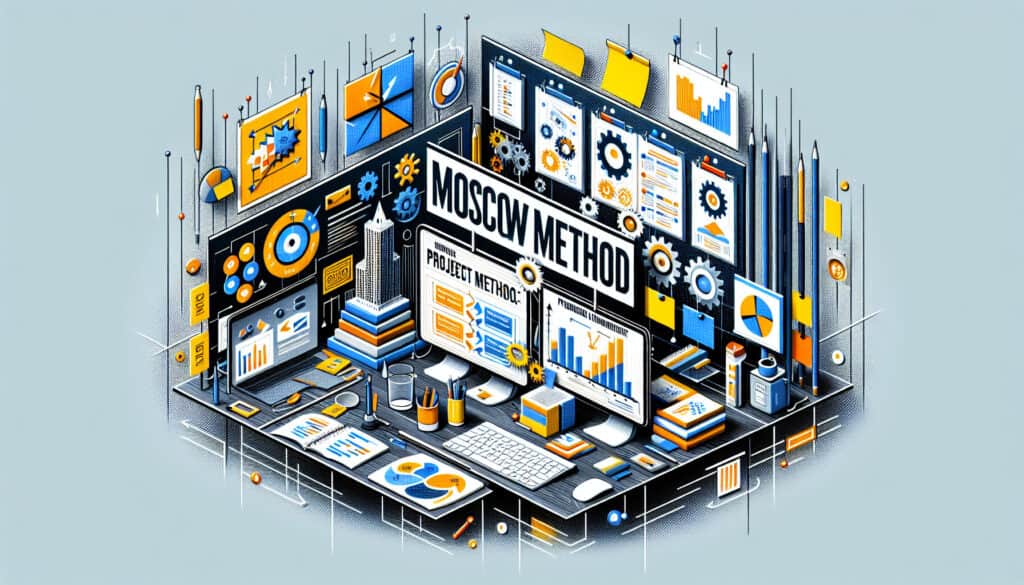Per dare priorità ai requisiti di un progetto.
- Metodologie: Ergonomia, Risorse umane, Gestione del rischio
Metodo MoSCoW

Metodo MoSCoW
- Metodologia agile, Sviluppo prodotto agile, Gestione del cambiamento, Miglioramento continuo, Sviluppo iterativo, Produzione snella, Gestione del progetto, Mischia, Mappatura del flusso di valore
Obiettivo:
Come si usa:
- Una tecnica di prioritizzazione utilizzata nella gestione dei progetti e nello sviluppo del software per raggiungere un'intesa con gli stakeholder sull'importanza che attribuiscono alla realizzazione di ciascun requisito. MoSCoW è un acronimo per Must have, Should have, Could have e Won't have.
Professionisti
- Semplice e facile da capire; aiuta a dare priorità ai requisiti e a gestire l'ambito.
Contro
- Può essere soggettivo e dipendere dall'interpretazione delle categorie; può non essere adatto a tutti i tipi di progetti.
Categorie:
- Progettazione del prodotto, Gestione del progetto
Ideale per:
- Dare priorità alle caratteristiche di un nuovo prodotto o ai compiti di un progetto per garantire che le cose più importanti vengano fatte per prime.
Il metodo MoSCoW è particolarmente utile nella gestione agile dei progetti e nello sviluppo dei prodotti in settori come l'ingegneria del software, la progettazione automobilistica e l'elettronica di consumo, dove le iterazioni rapide e il feedback degli stakeholder sono parte integrante del successo. Durante le fasi iniziali di un progetto, i product manager e i designer possono organizzare i requisiti in base alle categorie MoSCoW, consentendo ai team di definire i deliverable che si allineano strettamente alle esigenze degli utenti e agli obiettivi aziendali. Questa categorizzazione facilita una comunicazione chiara tra team interfunzionali, stakeholder e clienti, riducendo l'ambiguità sui livelli di priorità. È spesso utile durante le sessioni di pianificazione degli sprint nelle metodologie agili, quando i team devono valutare in modo efficiente le storie degli utenti e le richieste di funzionalità. I partecipanti includono tipicamente project manager, product owner, UX designer e technical lead, che collaborano per garantire una comprensione condivisa di ciò che costituisce una storia d'uso. prodotto minimo vitale (MVP) rispetto ai miglioramenti che potrebbero essere implementati in iterazioni future. Settori come la tecnologia sanitaria e l'energia rinnovabile hanno adottato con successo questa metodologia per gestire l'evoluzione dei requisiti e le aspettative degli stakeholder, ottenendo un approccio equilibrato alla fornitura di qualità e funzionalità, pur tenendo conto dei vincoli di risorse. In questo modo si migliora non solo la capacità del team di fornire tempestivamente funzionalità di valore, ma si garantisce anche che il prodotto finale sia ben allineato alle richieste del mercato e alla soddisfazione degli utenti.
Fasi chiave di questa metodologia
- Identificare ed elencare tutti i requisiti del progetto.
- Assegnate ogni requisito a una delle quattro categorie: Deve avere, Dovrebbe avere, Potrebbe avere e Non avrà.
- Coinvolgere gli stakeholder per convalidare la categorizzazione e garantire l'allineamento.
- Affinare e adattare le categorie in base al feedback degli stakeholder.
- Date la priorità ai requisiti all'interno delle categorie "Must have" e "Should have" per l'implementazione.
- Rivedere e modificare continuamente le priorità durante il ciclo di vita del progetto, se necessario.
Suggerimenti per i professionisti
- Impegnarsi gli stakeholder in sessioni periodiche del MoSCoW per adattare le priorità in base all'evoluzione delle dinamiche del progetto e al feedback.
- Utilizzare la prototipazione per testare tempestivamente le funzionalità "must have", assicurando che il team si concentri sulla fornitura di valore critico per l'utente in tempi rapidi.
- Documentare le motivazioni alla base di ogni categorizzazione MoSCoW per mantenere la trasparenza e facilitare le discussioni future sugli adeguamenti del progetto.
Leggere e confrontare diverse metodologie, raccomandiamo il
> Ampio archivio di metodologie <
insieme ad altre 400 metodologie.
I vostri commenti su questa metodologia o ulteriori informazioni sono benvenuti su sezione commenti qui sotto ↓ , così come tutte le idee o i link relativi all'ingegneria.
Contesto storico
1949
1950
1950
1960
1960
1960
1960
1940
1950
1950
1958
1960
1960
1960
1960
(se la data non è nota o non è rilevante, ad esempio "meccanica dei fluidi", viene fornita una stima approssimativa della sua notevole comparsa)















Post correlati
Test basati su modelli
Controllo del modello
Ricerca con metodi misti
A prova di errore (Poka-Yoke)
Test del profilo di missione
Calcolatore da METS a calorie